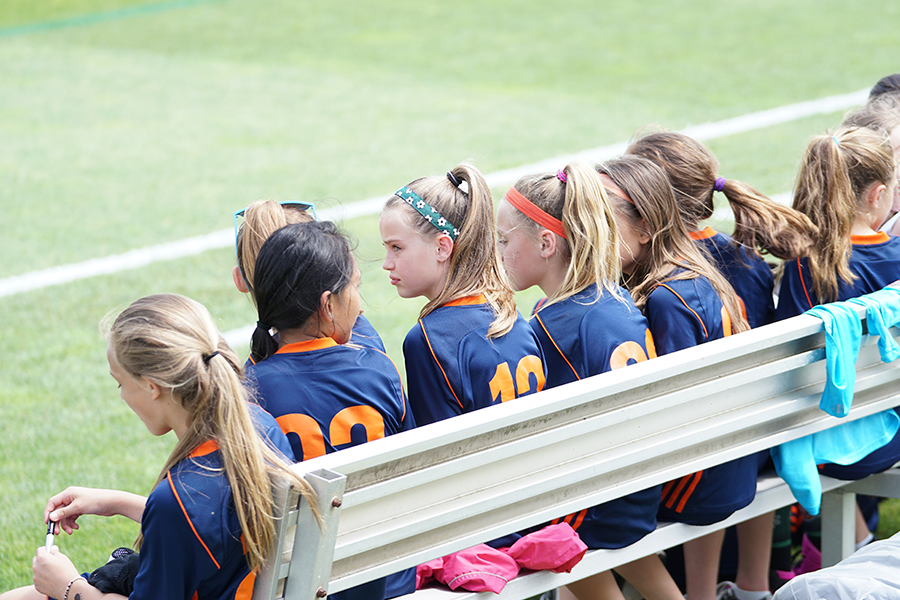The surprising co-benefits of increasing physical activity in schools

DATE
TYPE Prevention Centre News
There have been some clever ideas recently to get kids moving more in Australian primary schools that find it challenging to implement physical activity policies.
Recently, researchers from the National Centre for Implementation Science (NCOIS) suggested a simple change – why not dress children in sports uniforms all day long, rather than buttoned tunics and lace-up shoes?
Their study will reveal whether primary school children, but in particular girls, become more active if they wear more sports-friendly clothes. When the researchers surveyed teachers, parents and students about the research, they discovered an unexpected groundswell of support.
What excited the survey participants was not necessarily the potential health benefits of increased physical activity, but all the other co-benefits they anticipated from the uniform change.
Parents who responded to the survey said their daughters would be more comfortable during the day, without the potential embarrassments of wearing a skirt in the playground.
Those who had children with disabilities said their children would be able to dress themselves and be more independent; those from more disadvantaged backgrounds welcomed the lower cost of sports uniforms. There would be clear advantages in terms of gender equity and children’s overall wellbeing, they said.
We know that getting children active is crucial for their health and wellbeing, now and into the future. Physical education and physical activity are described in the United Nations Sustainable Development Goals (SDG 4.1) as “fundamental rights for all”. Since most children attend school, it makes sense to focus on education settings in our efforts to increase physical activity.
But our attempts to increase physical activity in schools through scheduled sport or PE classes are not working. The curriculum is too full, and teachers, especially in primary schools, may not have the specialist skills or time that is needed to pack the week with structured physical activity.
Perhaps we’ve been approaching this the wrong way.
If we can combine multiple opportunities for physical activity that produce immediate benefits for teachers and children, and are welcomed by parents, perhaps we can start to also achieve the changes our children so desperately need for long-term health.
This is clearly illustrated in another research project conducted by NCOIS, a cluster-randomised controlled trial that supported schools to implement mandatory physical activity policies.
The program, called Physically Active Children in Education (PACE), included ‘energisers’ or active lessons – short bursts (3 to 5 minutes) of intense physical activity within lessons, such as having children stand up and do a range of activities that made them huff and puff such star jumps, dance or play short games. Do this three times a day, and children will have clocked up an extra 15 minutes of intense physical activity.
The beauty of this strategy was that it was easy for teachers to implement, without the need for training and without encroaching on other learning areas.
Teachers who used the energiser lessons found their students were more focused and ready to learn, better able to concentrate, and less likely to exhibit poor behaviour. When they went into the playground for recess, these children were more likely to interact and play than they had been before.
This study adds to a mounting body of evidence that physical activity participation at school improves students’ concentration and academic performance, as well as their health outcomes.
Physical activity has been shown to increase student engagement in school, reduce truancy, and develop social skills such as teamwork and leadership among students.
An initiative in Victoria, Transform-Us!, found students who participated sat for 33 fewer minutes per day, achieved a lower body mass index and systolic blood pressure, had higher vitamin D levels, were able to concentrate better after an active break, and improved time on-task.
There are many opportunities to get children moving throughout the school day through active lessons, active breaks, during recess and lunch breaks, before and after school, as well as through changes to the classroom and broader school environment.
School programs are a best investment for physical activity, health and education. The Prevention Centre’s guide Getting Australia Active sets out the evidence for these and how they may be implemented in different education settings. The National Heart Foundation also provides recommendations for education in its Blueprint for an Active Australia.
By focusing on the co-benefits of these interventions, and communicating these to teachers and parents, perhaps we can start to increase physical activity for the benefit of all.
By Dr Nicole Nathan, NCOIS, Adjunct Professor Bill Bellew, School of Public Health, The University of Sydney, Matthew ‘Tepi’ Mclaughlin, NCOIS
Read more about CERI
The Collaboration for Enhanced Research Impact (CERI) is a joint initiative between the Prevention Centre and seven NHMRC Centres of Research Excellence, established in June 2020 to enhance the profile and impact of chronic disease prevention in Australia. We are working together to find alignment in the policy and practice implications of our work and to develop shared communications across our various projects and participating centres. Visit the CERI web page.



